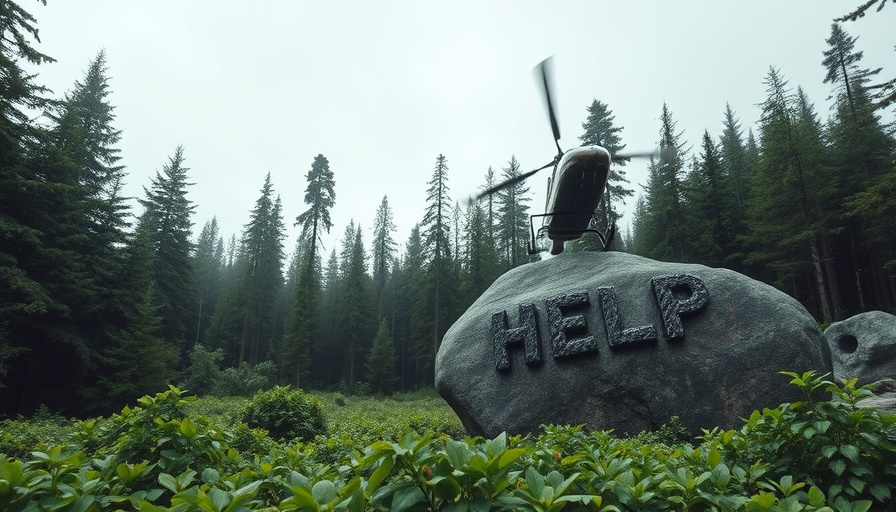
A Miraculous Survival Story: Andrew Barber's Journey
In a remarkable turn of events, Andrew Barber, a 39-year-old man, has been rescued after spending over a week lost in the rugged wilderness of central British Columbia. His story is not only one of survival but also a testament to the resilience of the human spirit and the dedication of local search and rescue teams.
The Initial Search Effort
Barber was last seen on July 28 near Castle Rock, a remote area located west of the Fraser River, between Quesnel and Williams Lake. Following the report of his disappearance, search and rescue teams quickly mobilized. Significant efforts were made by local volunteers, along with law enforcement, showcasing the community's commitment to finding him.
According to Staff Sergeant Brad McKinnon of the Williams Lake RCMP, the initial stages of the search involved combing through vast stretches of terrain, utilizing both ground crews and helicopter support. “The search was challenging due to the treacherous landscape and the lack of available landmarks in such a remote area,” McKinnon explained.
Key Discoveries That Led to His Rescue
The breakthrough came when search and rescue crews spotted Barber's abandoned truck parked on a forest service road. This crucial find allowed them to concentrate their efforts in the surrounding area. Bob Zimmerman, a member of the Quesnel Search and Rescue team, noted, “Once we located the vehicle, it significantly narrowed down our search zone, giving us a much better chance of locating him quickly.”
What Andrew Barber Experienced
While details regarding Barber's precise experiences during his time in the wilderness are limited, it is understood that his vehicle broke down shortly after his arrival in the area. Facing harsh conditions, he made a commendable effort to find shelter and survive until help arrived. Staff Sergeant McKinnon remarked, “He took steps to shelter and survive and trusted that first responders working on the case would find him.”
Survival skills, whether innate or learned, played a crucial role in helping Barber sustain himself until rescue. Reports indicate that he managed to ration food and find natural shelter amid the elements, demonstrating his resourcefulness.
The Importance of Community Support
This incident underscores the crucial role that community and local organizations play in search and rescue operations. Many volunteers sacrifice their time, training financially and emotionally for such efforts. The response to Barber's disappearance drew on resources from various community groups, showcasing solidarity and the readiness to act during emergencies. "It truly highlights the power of community coming together during a crisis," concluded Zimmerman.
Lessons Learned and Future Implications
Barber's story illustrates significant lessons for outdoor enthusiasts taking to the rugged terrains. Preparedness remains essential when embarking on adventures in the wilderness. Having a reliable means of communication, ample supplies, and a solid plan can make all the difference between life and death in unforeseen situations. As local search and rescue teams continue to hone their skills and resources, incidents like Barber's serve as reminders of both the unpredictability of nature and the necessity of safety.
A Hopeful Ending and a New Beginning
Fortunately, Andrew Barber has been found healthy and in good spirits. His experience has not only highlighted the capabilities of local search and rescue operations but also generated conversations about wilderness safety and the importance of responsible outdoor practices. The story of his survival invites reflection and encourages outdoor adventurers to prepare adequately while enjoying the vast natural beauty that British Columbia has to offer.
Now, more than ever, it's imperative to take heed of the lessons drawn from such experiences, allowing the community to cultivate a culture of readiness and awareness whenever people venture into the wild. Let Andrew Barber's story remind everyone about the intricate balance of enjoying nature and respecting its potential dangers.
 Add Row
Add Row  Add
Add 




Write A Comment